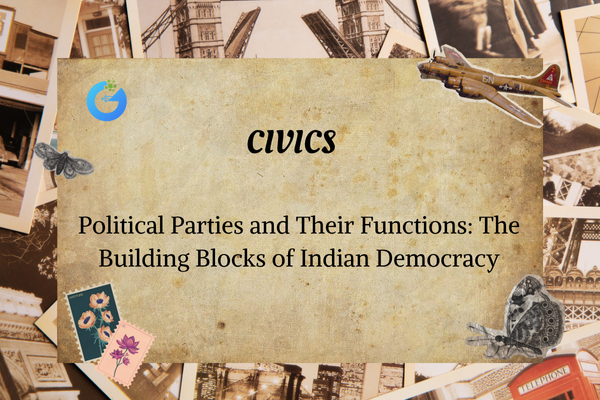Introduction
Why is ice hard, water flowy, and steam invisible? They’re all made of H₂O (water) but look and behave differently. That’s because they are in different states of matter—solid, liquid, and gas.
Everything you see, touch, and feel is made of matter. The way that matter behaves depends on its state and the energy its particles have. In this chapter, we’ll explore the three main states of matter and what makes each one special.
expert-led Chemistry classes – visit our website to learn more
What Is Matter?
Matter is anything that has mass and takes up space.
Your bag, your pen, the air you breathe—all are matter. Even things you can’t see (like gas) are made up of particles that have mass and volume.
The Five States of Matter:
- Solid
- Liquid
- Gas
- Plasma (Advanced, not in syllabus)
- Bose-Einstein Condensate (BEC) (Advanced)
In Class 9, we focus on solids, liquids, and gases.
Properties of Solids, Liquids, and Gases
Let’s understand how particles behave in different states.
| Property | Solid | Liquid | Gas |
| Shape | Fixed | Not fixed (takes shape of container) | Not fixed (fills container) |
| Volume | Fixed | Fixed | Not fixed |
| Compressibility | Almost none | Slight | Highly compressible |
| Particle Arrangement | Tightly packed | Loosely packed | Far apart |
| Movement | Vibrate in place | Move around slowly | Move freely and very fast |
| Examples | Ice, wood, iron | Water, milk, oil | Air, oxygen, carbon dioxide |
How Do States Change?
Interconversion of States of Matter
Matter can change from one state to another by changing temperature or pressure.
| Change | Name of the Process |
| Solid → Liquid | Melting |
| Liquid → Solid | Freezing |
| Liquid → Gas | Boiling/Evaporation |
| Gas → Liquid | Condensation |
| Solid → Gas (direct) | Sublimation |
| Gas → Solid (direct) | Deposition |
Factors That Affect State Changes
- Temperature
- Heating gives particles energy, making them move more.
- Example: Heat ice → particles move → turns to water.
- Heating gives particles energy, making them move more.
- Pressure
- Increasing pressure pushes particles closer together.
- Gases can turn to liquids under high pressure.
- Increasing pressure pushes particles closer together.
- Kinetic Energy of Particles
- More energy = particles move faster = easier to change state.
- More energy = particles move faster = easier to change state.
Let’s Talk About Some Special Changes
Sublimation:
Some solids skip the liquid state and directly become gases.
Examples:
- Camphor
- Dry Ice (solid carbon dioxide)
- Naphthalene balls
Deposition:
Gas changes directly into a solid (the reverse of sublimation). This can happen when frost forms on a cold surface.
Core Concepts Table
| Concept | Definition |
| Matter | Anything with mass and volume |
| Solid | Fixed shape and volume |
| Liquid | Fixed volume, no fixed shape |
| Gas | No fixed shape or volume |
| Compressibility | Ability to be squeezed into smaller space |
| Sublimation | Solid directly to gas |
| Melting Point | Temperature at which a solid turns into a liquid |
| Boiling Point | Temperature at which a liquid turns into a gas |
Real-Life Examples of States of Matter
- Solid: Ice, chair, book
- Liquid: Water, oil, juice
- Gas: Air, steam, LPG
- Melting: Ice cream on a hot day
- Evaporation: Wet clothes drying
- Condensation: Water drops on a cold glass
Frequently Asked Questions
Q1. Why do gases fill the entire container?
Because their particles move freely and quickly in all directions.
Q2. What is sublimation?
A process where solids directly turn into gases without becoming liquid first.
Q3. Which state of matter is the most compressible?
Gases—they have lots of space between particles.
Q4. Can solids flow?
Usually no. But substances like salt or sand may “pour” like a liquid.
Q5. What happens when you heat a solid?
Its particles gain energy, vibrate faster, and may change into a liquid (melting).
Fun Facts for Students
- Dry Ice doesn’t melt into a liquid—it goes straight into gas!
- Water is the only substance found naturally in all 3 states on Earth.
- Your breath is a mix of gas and water vapor—when it’s cold, you see it condense!
- In outer space, most matter exists as plasma, not solids or liquids.
Conclusion
Understanding the states of matter helps you make sense of everything around you—from boiling water to ice melting in your hand. It’s all about how tiny particles behave, and how temperature and pressure affect them.
Whether you’re baking, swimming, or just watching steam rise from your tea, you’re witnessing science in action!








